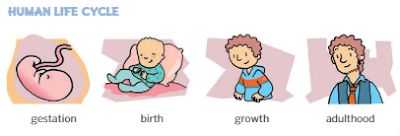- Soft
- Rigid
- Flexible
- Rigid
- Transparent
- Opaque
- Magnetic
- Waterproof
FLOAT or SINK
UNIT 4. PLANTS
Plants need: water, sunlight, soil and air to live.
Parts of a plant:
Roots: are underground. They absorb water and minerals.
Stem: hold the plant.
Leaves: are green and they make their food here in the leaves. plants breathe through the leaves too.
Flower: is the colorful part of the plant. They make the seed.
Seed: is underground is where the plant grows.
TYPES OF PLANTS
- TREES: have a thick and hard stem called TRUNK.
- BUSHES: have a lot of stems. They are short.
- GRASSES: are thin and bendy.
TREES
Trees are tall. They have a thick and hard stem called TRUNK.
Some trees have fruits and flowers.
PARTS OF A TREE:
- ROOTS
- TRUNK
- LEAVES
- FRUITS
- BRANCHES
TYPES OF TREES
Trees can be:
- Evergreen trees: they are green all year round.
- Deciduous trees: lose their leaves in autumn.
Parts of a flower:
Pistil
Stamen
Sepal
Petal
Flowers make seeds. Seeds make new plants.
Some flowers turn into fruits. The fruit contains the seed. When the fruit falls to the ground new plants grow from the seed.
NON-FLOWERING PLANTS
Mosses and ferns are non flowering plants.
Mosses are short and soft. They don't have flowers. They can’t make seeds.They reproduce with spores.
Ferns are small and green. They live in shady places. They have roots, stem and leaves.They don't have flowers or fruits.
UNIT3. ANIMALS
The TEST will be next Tuesday 2nd February 2021
They have to know the difference between:
- Vertebrates and invertebrates
- Oviparous and viviparous
- Carnivores, herbivores and omnivores.
Types of vertebrates: mammals, birds, fish, amphibians and reptiles.
Types of invertebrates: molluscs, arthropods and worms.
They need to study the 5 types of vertebrates
Tuesday 19th January 2020
VERTEBRATES
Vertebrates have a backbone.
Mammals, birds, reptiles, amphibians and fish are vertebrates.
Mammals are viviparous. They have their body covered with fur.
Examples: dog, cat, lion,tiger...
And also the whale, the bat and the dolphin.
Birds are oviparous. They have feathers. Most birds can fly because they have wings.
Examples: penguin, hen, parrot, chicken...
Fish: they are oviparous. They have scales. They can swim because they have fins. They live in water.
Examples: sardine, trout, shark...
Reptiles are oviparous. They have scales. They can slither.
Examples: crocodile, snake, turtle...
Amphibians are oviparous. The have wet skin. They live in land and in water.
Examples: frog, toad, salamander...
INVERTEBRATES
Invertebrates haven’t got bones.
Monday 18th January STORY TIME!
Today we are going to listen and watch the STORY.
You need to go to the DIGITAL BOOK and find Coco´story.
Page 44.
Activity 1. Match the babies with their mothers.
Activity 2. Is a book a living or non living thing?
Page 45
Activity 4. Draw 2 living things and 2 non living things from the story.
Activity 5. Circle YES or NO.
Living and non living things
Animals and plants are living things.
Animals belong to the Animal Kingdom.
Plants belong to the Plant Kingdom.
ANIMAL KINGDOM: we have all types of animals.
For example: lions, cats, fish, crocodiles, birds, bears, spiders, butterflies, giraffes, frogs...
Animals are classified into:
- Vertebrates have a backbone inside their bodies.
- Invertebrates don't have a backbone inside their bodies.
VERTEBRATES
Vertebrates have a backbone.
Mammals, birds, reptiles, amphibians and fish are vertebrates.
INVERTEBRATES
Invertebrates haven´t got a backbone.
Insects and spiders are invertebrates.
Many invertebrates are very small.
Molluscs, arthropods and worms are invertebrates.
Octopuses and snails are molluscs.
Spiders and ladybirds are arthropods.
ANIMAL NUTRITION
- Herbivores eat plants. Giraffes eat plants: they are herbivores.
- Carnivores eat other animals. Lions eat meat: they are carnivores.
- Omnivores eat plants and other animals. Bears eat meat and plants: they are omnivores.
UNIT 2. INTERACTION
The test will be next MONDAY 30th November 2020.
They will need to know and to write the muscles, bones and joints. Also they need to know the 5 senses and the organs.
Our LOCOMOTOR SYSTEM is made up of BONES, MUSCLES and JOINTS.
Bones form the skeleton.
Bones are hard and rigid
Bones:
- Skull
- Ribs
- Spine
- Humerus
- Femur
- Hip
Muscles
Muscles are soft and elastic.
- Biceps
- Abdominals
- Pectorals
- Quadriceps
- Calf muscles
- Gluteus
- Shoulder
- Elbow
- Wrist
- Hip
- Knee
- Ankle
UNIT 1. NUTRITION and REPRODUCTION
The TEST will be next MONDAY 26th October 2020
IMPORTANT: They need to write the parts of the systems.
In this UNIT we are going to learn about:
- the digestive system
- the respiratory system
- the circulatory system
- the excretory system
- the reproductive system
- mouth
- esophagus
- stomach
- intestine.
It is important to eat HEALTHY FOOD.
There are 5 groups of food:
- Potatoes, bread, cereals and pasta.
- Milk and dairy.
- Oil and butter.
- Fruit and vegetables.
- Fish, eggs, meat, beans and pulses.
RESPIRATORY SYSTEM
In the respiratory system we breathe OXYGEN and we breathe out CARBON DIOXIDE.
The respiratory system takes oxygen from the air. It carries oxygen to our lungs.
The parts of the respiratory system are:
Nose
Trachea
Lungs
CIRCULATORY SYSTEM
The circulatory systems sends BLOOD around the body.
Blood carries
The HEART pumps BLOOD.
The blood carries and delivers NUTRIENTS and OXYGEN.
The parts of the circulatory systems are:
HEART
BLOOD VESSELS
EXCRETORY SYSTEM
REPRODUCTIVE SYSTEM
With this Power Point Presentation, we are going to review the main contents from 1st Grade.














No hay comentarios:
Publicar un comentario